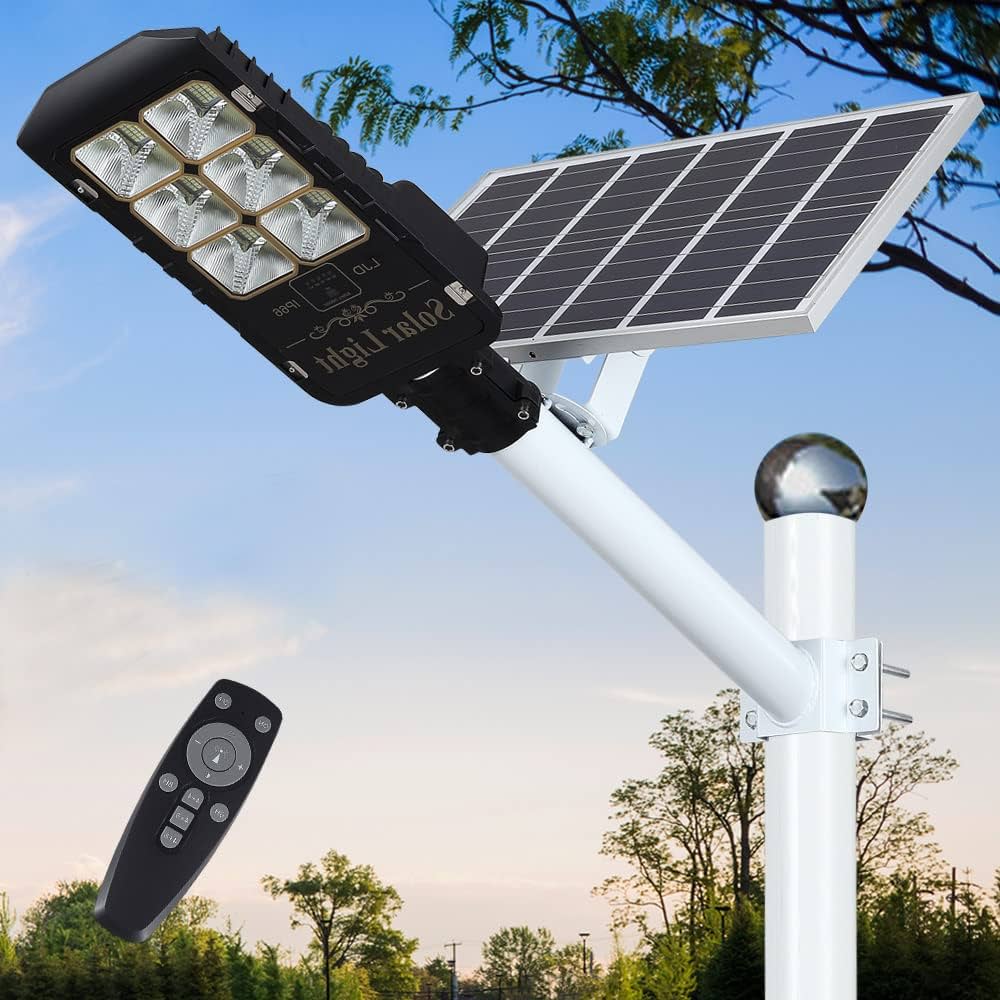In today’s world, where environmental consciousness and energy efficiency are more crucial than ever, solar lights have emerged as a game-changing solution. As the demand for eco-friendly lighting options grows, homeowners, businesses, and governments alike are turning to solar-powered lighting systems for their remarkable benefits. From saving on electricity bills to reducing carbon footprints, solar lights offer an innovative and sustainable approach to modern lighting needs. Whether you’re illuminating a garden path or lighting up a parking lot, solar lighting solutions deliver unmatched efficiency without compromising on performance.
At KP Smart Energy, we believe in harnessing the power of the sun to drive a cleaner, greener future. In this article, we’ll explore the various types, benefits, and applications of solar lights, and why they have become an essential element in energy-conscious living.
Understanding Solar Lights
What Are Solar Lights?
Solar lights are lighting systems powered by solar energy. They typically consist of solar panels, rechargeable batteries, LED bulbs, and control circuitry. During the day, the solar panels absorb sunlight and convert it into electricity, which is stored in the batteries. At night, the stored energy powers the LED lights, offering reliable illumination without tapping into the electrical grid.
Components of Solar Lighting Systems
- Solar Panel: Captures sunlight and converts it into electricity.
- Battery: Stores the converted energy for nighttime use.
- LED Light: Provides bright and efficient illumination.
- Controller: Regulates the charging and discharging of the battery.
- Sensor (Optional): Detects motion or darkness to automatically turn the light on or off.
The Benefits of Solar Lights
1. Environmentally Friendly
One of the most compelling advantages of solar lights is their eco-friendliness. Unlike conventional lights that rely on fossil fuels for electricity, solar lights generate power from the sun—a renewable, clean energy source. This reduces greenhouse gas emissions and helps combat climate change.
2. Cost-Effective in the Long Run
While the upfront cost of installing solar lighting systems may seem higher than traditional alternatives, the long-term savings are significant. Since solar lights require no electricity from the grid, users can enjoy lower utility bills. Moreover, minimal maintenance and long-lasting LED bulbs contribute to ongoing cost reductions.
3. Energy Independence
Solar lights empower users to become less dependent on utility companies and fluctuating energy prices. This is especially beneficial in remote or off-grid locations, where conventional lighting infrastructure may be expensive or impractical to install.
4. Easy Installation
Most solar lights are designed for quick and easy installation. With no wiring or trenching required, they can be installed virtually anywhere the sun shines—gardens, pathways, parking lots, rooftops, and more.
5. Enhanced Safety and Security
Solar lights contribute to a safer environment by providing consistent lighting in outdoor areas. Motion sensor solar lights, in particular, can deter potential intruders and alert homeowners to movement around their property.
Types of Solar Lights
Garden and Landscape Solar Lights
These decorative lights are ideal for highlighting garden features, pathways, or driveways. They add aesthetic value while enhancing nighttime visibility.
Solar Street Lights
Solar street lights are designed for larger-scale public lighting applications. Equipped with high-capacity solar panels and powerful LEDs, they offer bright and consistent illumination for roads, highways, and public parks.
Solar Flood Lights
Floodlights provide high-intensity lighting, making them ideal for illuminating large outdoor spaces like warehouses, playgrounds, and parking lots. Many come with motion sensors to enhance security.
Solar Wall Lights
Mounted on exterior walls, these lights are perfect for lighting up patios, entrances, and backyards. They are commonly used for both decorative and functional purposes.
Portable Solar Lights
Portable solar lighting systems, such as solar lanterns and flashlights, are convenient for camping, hiking, or emergency use. They are lightweight, rechargeable, and easy to carry.
Key Features to Look For in Solar Lights
Battery Capacity and Type
The efficiency of a solar light greatly depends on its battery. Look for high-capacity lithium-ion batteries, which offer longer life and faster charging times.
Brightness (Lumens)
Different applications require varying levels of brightness. A garden light may need around 100 lumens, while a solar floodlight might require 1000 lumens or more.
Charging and Runtime
A good solar light should offer sufficient runtime after a full charge. Typically, 6 to 8 hours of sunlight should power a light for 8 to 12 hours.
Durability and Weather Resistance
Ensure your solar lights are built to withstand harsh outdoor conditions. Look for weatherproof ratings such as IP65 or higher.
Smart Features
Advanced solar lights now come with smart features like motion detection, dusk-to-dawn sensors, remote controls, and mobile app connectivity.
Applications of Solar Lights
Residential Use
Homeowners can use solar lights for landscaping, driveway lighting, backyard illumination, and home security. These lights improve curb appeal and safety without increasing electricity bills.
Commercial and Industrial Use
Businesses benefit from solar lighting in parking lots, perimeter fencing, signage illumination, and warehouse exteriors. They help cut energy costs and demonstrate a commitment to sustainability.
Municipal and Public Infrastructure
Governments use solar street lights to illuminate public roads, parks, and walkways. These installations reduce public spending on electricity and enhance civic safety.
Emergency and Disaster Relief
In the aftermath of natural disasters, access to power is often limited. Portable solar lights are invaluable tools for first responders and affected communities.
Solar Lights vs. Traditional Lights
Feature Solar Lights Traditional Lights Energy Source Sunlight (renewable) Electricity from the grid Operating Cost Minimal Ongoing energy bills Installation Easy, no wiring needed Complex, requires wiring Environmental Impact Low, eco-friendly High, depends on fossil fuels Maintenance Low Moderate to high
Common Myths About Solar Lights
Myth 1: Solar Lights Don’t Work in Cloudy Weather
While direct sunlight ensures optimal performance, solar panels can still generate electricity under cloudy conditions—though at reduced efficiency. Many solar lights are designed to store enough energy for multiple days of use.
Myth 2: Solar Lights Are Too Expensive
While the initial cost might be higher, the absence of monthly energy bills and minimal maintenance quickly balances the investment. In many cases, users recover their costs within a year or two.
Myth 3: Solar Lighting Is Only for Homes
Solar lights are versatile enough for residential, commercial, industrial, and even municipal use. Their scalability makes them suitable for everything from garden pathways to entire city streets.
The Future of Solar Lighting
As technology evolves, solar lights are becoming more efficient, affordable, and intelligent. Innovations such as integrated solar panels, smart sensors, and energy-efficient LEDs are paving the way for wider adoption. With increasing awareness about climate change and the global push toward sustainable energy, solar lighting will continue to play a pivotal role in reshaping how we light our world.
Choosing the Right Solar Lights
Before purchasing solar lights, consider the following:
- Purpose: Define your lighting needs—decorative, functional, or security.
- Sunlight Exposure: Ensure the installation area receives adequate sunlight.
- Design Preferences: Choose a style that complements your property.
- Budget: Factor in both upfront costs and long-term savings.
Conclusion
Solar lights are more than just a trend—they are a vital part of the sustainable energy movement. Offering a blend of functionality, efficiency, and environmental responsibility, they present a compelling alternative to conventional lighting solutions. Whether you’re looking to reduce your carbon footprint, cut down on electricity bills, or simply add elegance to your outdoor space, solar lights are a smart investment. At KP Smart Energy, we are committed to bringing you the latest and most reliable solar lighting technologies. Make the switch today and embrace a brighter, greener future—one solar light at a time.




